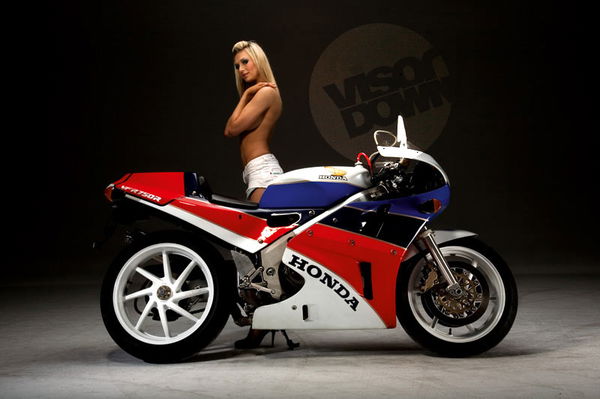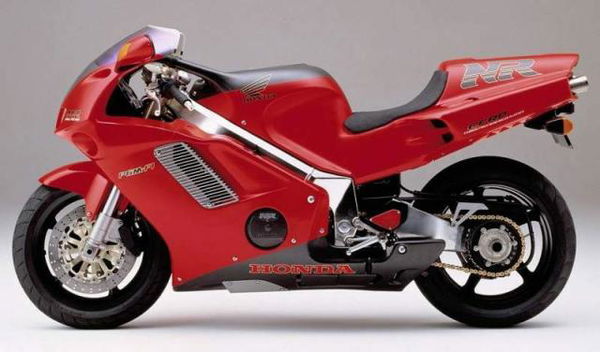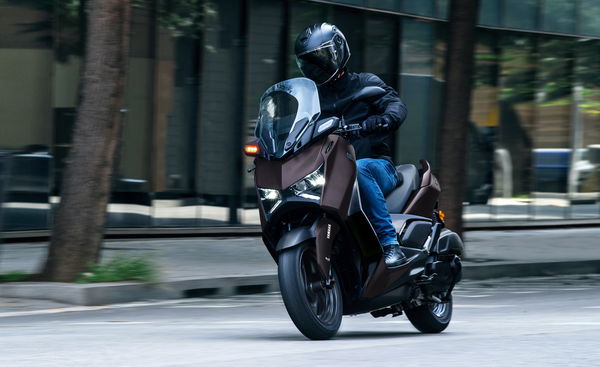Top 10 best ever Hondas
The 10 best ever motorcycles from the big H

HONDA has probably made more models over a wider range of configurations than any other motorcycle manufacturer in history. Which means picking a top 10 of the best bike’s it has ever made is a tough task.
Even if we made this a top 100 we’d still probably end up leaving out machines that some of you would justifiably say qualified. Choosing only 10? Well, we can be sure that you probably won’t agree with all our picks.
Should the first ever Honda be included? It’s among the most important without doubt, but one of the firm’s best? Surely not.
What about the latest Fireblade? It’s objectively the best machine to carry that famous name, but it doesn’t move the goalposts like the first generation model – no doubt a far inferior bike in every measurable way – did. Decisions, decisions…
Here’s our pick for the top 10. Let the arguments begin...

10: NR750
Let’s start with a controversial one. By most measures the NR750 was a failure. Horrifically expensive, Honda struggled to sell them. For all its carbon fibre it looked overweight and while the engine was a technological marvel its actual performance was underwhelming. So does it deserve to be in the list at all? We say yes, simply because even a quarter of a century from its launch it’s so gloriously over-engineered and overcomplicated. Honda’s creation of the oval-piston engine was an example of the firm’s uncompromising thinking in its most glorious period. Originally developed as a 500cc GP four-stroke, Honda wanted two-stroke performance but was banned from using its favoured solution, a V8. The answer? Create an engine that was a V8 in all but its cylinder count by dispensing with a century’s practice of making cylinders circular. The oval pistons, each with two con-rods and fed by eight valves, were a nightmare to develop and never quite managed to achieve their two-stroke-rivalling goal. The NR750 road bike was an afterthought for the technology, but no other bike ever offered to the public has used such far-out thinking.
The Goldwing, particularly in its ever-larger, ever-heavier later variants, is a bike that’s sometimes shunned by mainstream riders. Goldwing owners are seen as part of a separate tribe, their bikes mocked as two-wheeled cars. But in reality the Goldwing, and particularly the 1800cc six-cylinder models of this century, are machines that manage things that should be impossible on two wheels. Like the NR750, the Wing is a legacy of a time when Honda as a company was so effortlessly superior that it could play with weird engineering solutions and still succeed. The bike’s flat-six engine was another example of the time when Honda could arrogantly depart from the norm and offer something better as a result. It’s so good at doing its job that even now, 16 years on from its launch, the Goldwing 1800 is still the standard-bearer of the big tourer class.
Often overlooked, the Blackbird was actually something rather special. Is 1996 launch was largely dominated by headlines of a fiction 200mph top speed (actually it gave up about 20mph shy of that) that even had the mainstream media questioning the wisdom of offering such performance for “less than the price of a small hatchback car” – as though buyers would be cross-shopping between the two. But to focus on speed alone is to do the Blackbird a disservice; it’s one of the great all-rounders, in the same vein as the VFR750 and the CBR600F, just faster. Touring? No problem, hop on. Commuting? Easy. Track days? At a push. And all with that Honda level of integrity that’s sometimes mistaken for blandness.
Is it too soon to rate the RC213V-S as an all-time great? Nah. It’s a road-going version of an enormously successful MotoGP bike, forged in the hallowed halls of HRC. The price means you and I will probably never get to own one, but in an era when Honda hasn’t been showing the sparkle that it once did, the very existence of the RC213V-S is something of a return to form. It’s easy to be disparaging. Yes, in stock form it’s less powerful than bikes that cost a tenth as much. So what? Don’t leave it stock. A few factory-approved mods release the built in potential.
Impressive though the RC213V-S is, the 30-year-old RC30 has an even greater reputation. Honda was right on its game in 1987 when the RC30 was launched, and the homologation special was at the very top of its range. These days its spec might look restrained, but at the time it was basically a racer-for-the-road, converted from the RVF factory racers of the previous couple of years. Timed to coincide with the then-new WSB championship, the RC30 also delivered on track. The gear-driven-cam V4 is a masterpiece, the styling is timelessly attractive. The single-sided swingarm had a practical use – endurance racing – rather than being mere eye-candy.
The Fireblade had to be here, of course, and it was the original generation bike that was ‘best’ when seen in the context of its era. Again it came from Honda’s golden period; can you imagine a firm today simultaneously developing three separate superbikes, each with different engine layouts? That’s what Honda did when it created the Fireblade, RC30 and NR750 – all bikes that make it onto this list. The Blade actually started life as a reject – a 750cc inline four designed as an alternative to the V4 RC30 – but it was revived when Tadeo Baba legendarily made the call to increase its capacity. Dropping any ideas of race-legal capacity limits in favour of creating an ultimate road-going superbike turned out to be the key to the Blade’s success. The idea of 1000cc performance in a 600cc-sized package is a cliché today, but it’s one that the original Blade really lived up to.
READ OUR REVIEW OF THE 2017 HONDA FIREBLADE.
It’s easy to dismiss the VFR750. In all its guises it’s been something of a workhorse sports-tourer, an all-rounder that’s overshadowed by more exotic superbikes or more dedicated touring machines. But it’s that same Jack-of-all-trades ability that earns its place on this list. Back in 1986, just before the RC30 appeared, the VFR was actually chiselling out a position as a decent race bike, and its aluminium frame came just a year after the GSX-R750 first adopted the material. The engine, with its gear-driven cams, was a direct predecessor of the RC30’s and remains an exotic design even now. But above all that, the VFR wasn’t temperamental. It was reliable and comfortable in way that no ‘superbike’ should be. There was really no excuse to need another type of bike, regardless of your needs. In a list dedicated to the ‘best’ it definitely earns a place.
Back in the 1960s Honda was forging a reputation for cheap, friendly, reliable transport on two wheels. In America the famous ad campaign – “You meet the nicest people on a Honda” – summed up the company’s position. At the same time it was becoming a formidable force in racing, though, and the 1969 CB750 marked the point at which those racing lessons were transferred to the showroom. Before the CB750, four-cylinder bikes were almost unknown away from the track. Before the CB750, disc brakes were something that cars and race bikes used. Before the CB750, the word ‘superbike’ didn’t exist. It’s one of the most important bikes in history.
READ OUR REVIEW OF THE 2017 HONDA CB1100 RS AND EX.
More than 60 million Honda Super Cubs have been made, and Honda is already preparing for a new generation of the same with its electrically-powered EV-Cub, which will appear next year. The Super Cub – best exemplified in this country by the C90 – isn’t fast. It isn’t complicated. It isn’t advanced. It isn’t even terribly comfortable. What is it, then? It’s cheap, simple, reliable and easy to fix if anything does go wrong. It’s inspired copies all over the world and moved countless communities into a new era of motorised transport. By some measures it’s the most successful and significant motorcycle ever made. But it’s not Honda’s best.
Another bike that emerged from Honda’s late-80s model push, when it seemed everything the firm touched was imbued with genius, the CBR600F again showed the firm’s uncanny ability to make an all-rounder that was better than specialised machines from other companies. Like the VFR750 of the same era, the CBR could do everything. But it did it even better than the VFR did, and for less money. There was no exotic alloy frame (at least not until 1999), just a cheapo steel chassis. There were no upside-down forks or other racy kit. But the CBR600F still won endless supersports titles, both nationally and internationally, against machines with much more impressive on-paper specs. In the UK it basically owned the number one sales spot in the same way that BMW’s R1200GS does now, and as a result the CBR is still one of the most common bikes on the road. The CBR600F, in all its guises, was an unpretentious machine, subtle and low-key, that would politely eviscerate the competition.











